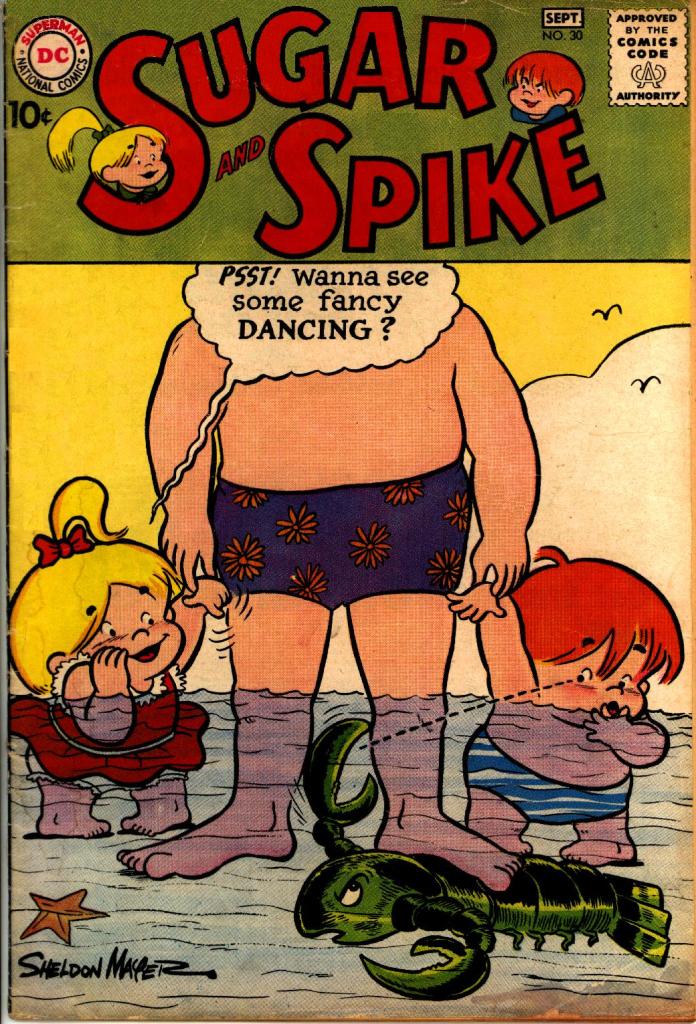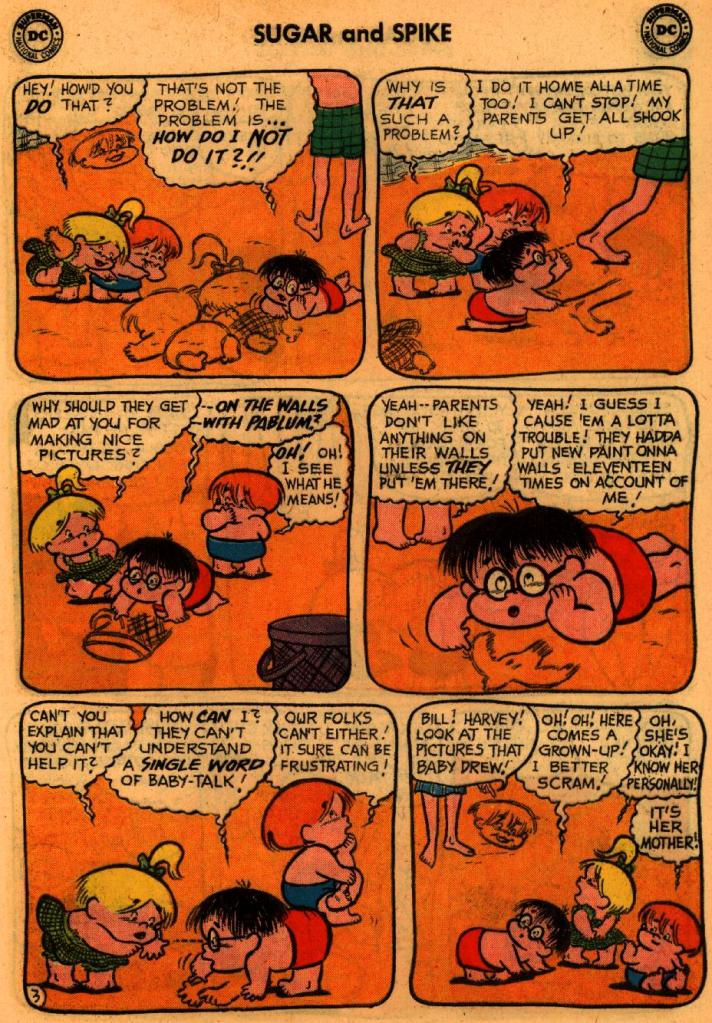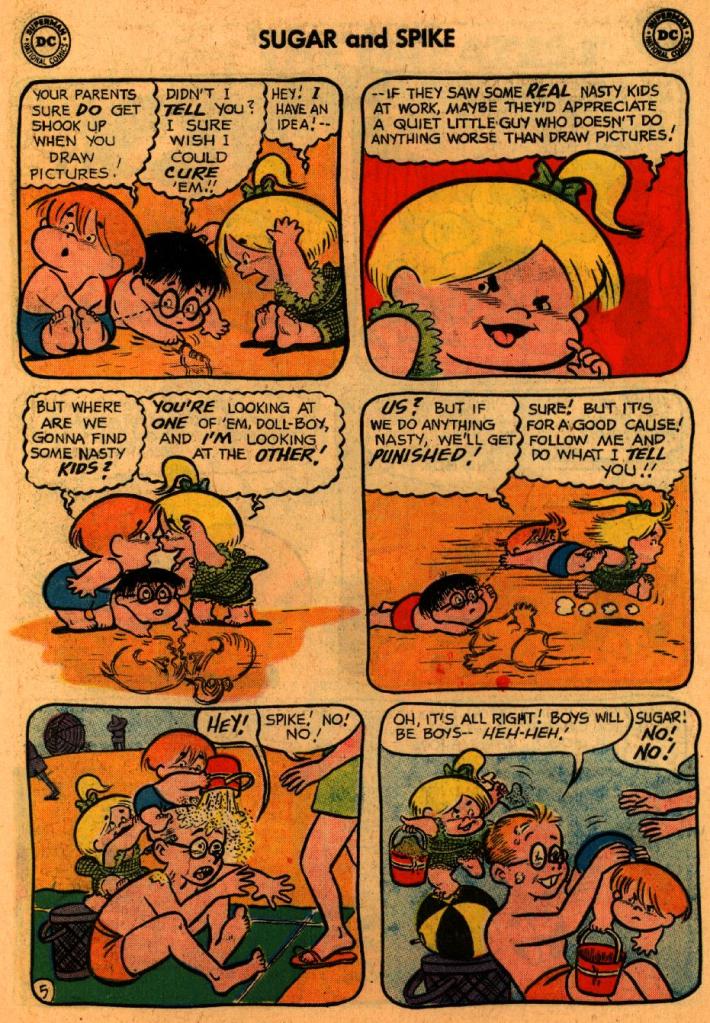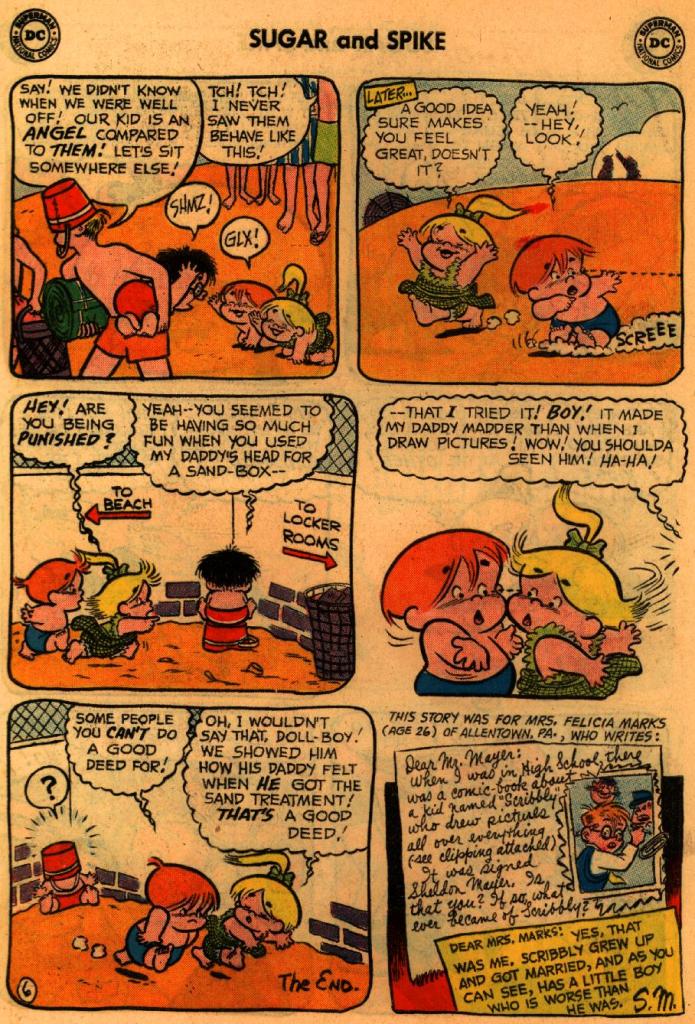
Sheldon Mayer is one of the most important figures in the Golden Age of Comics, though he’s one that relatively few people have heard about. An obsessive cartoonist, Mayer broke into the business at a young age, in the era in which comic books were just starting out. For a time, he worked at the McClure Newspaper Syndicate along with his boss, Max Gaines. Gaines was the person who first innovated the standard comic book format by folding a newspaper one additional time and then stapling it. As Gaines’ assistant, Shelly extolled the virtues of a new submission that he just loved, from two teenagers in Cleveland. It was called SUPERMAN. While McClure didn’t take it on (at least not yet), at Mayer’s insistence, Gaines shared the material with Harry Donenfeld at National Comics, who was looking for a lead feature for his new publication ACTION COMICS.

When Gaines made a deal with Donenfeld to start up a new comic book company that would be a sister outfit to National and share the use of the DC logo as well as splitting paper contracts, Mayer followed him to the newly-established All-American Comics. There, Mayer became the firm’s editor, and oversaw the creation of the Flash, Hawkman, Johnny Thunder, Green Lantern, the Atom, Doctor Mid-Nite, Wildcat, Wonder Woman and the Justice Society of America. He was also an early mentor to a generation of cartoonists, including Joe Kubert, Carmine Infantino and Alex Toth. But Shelly’s first love was always drawing, rather than editing, and he’d take every opportunity to ply his trade.

Even before working with Gaines, Mayer had created his signature character, who made his debut in POPULAR COMICS #6 from Dell Comics. This was Scribbly Jibbet, a young kid from the neighborhood who got into wild scrapes and adventures as he attempted to pursue his dream of becoming a newspaper cartoonist. Scribbly was one of the first original characters to appear in comic books, at a time when most of the material was still reprints of newspaper strips. It was very much an autobiographical series in the broad sense–so much so that Scribbly himself drew a regular cartoon series in the world of the strip: “Why Big Brothers Leave Home.” When Mayer moved over to All-American with Gaines, he took Scribbly with him, and the feature held a regular home in their flagship title, ALL-AMERICAN COMICS for several years.


As super heroes became the hot genre, Mayer had some fun with its conventions by introducing a neighborhood super hero into the Scribbly continuity. This was Ma Hunkle, the mother of two of Scribbly’s playmates, who winds up donning a makeshift outfit with a pot over her head to disguise her identity and becoming the fearsome Red Tornado. The Red Tornado all but took over the Scribbly strip for the back half of its run, and Mayer also included her in the first meeting of the Justice Society of America in ALL-STAR COMICS #3, where she appeared for a single page written and drawn by Mayer himself. Eventually, though, Mayer couldn’t split his time between drawing and his editorial responsibilities, and with paper rationing shrinking page counts, the Scribbly feature was discontinued after ALL-AMERICAN COMICS #59 in 1944.

But that wasn’t the end for Scribbly! By 1948, after the merger of National and All-American into a single company, Mayer felt the itch to get back to drawing full time. He was considered a well-respected figure by the DC management, and so he cut a deal with them to produce a certain amount of work for the line every month. One of the titles he’d work on was a revived Scribbly, which was launched as its own series in 1948. This incarnation of Scribbly downplayed the neighborhood situations, aging the lead character up a little bit and thrusting him into circumstances similar to those one might find in Archie and its many knock-offs. Scribbly was still an avid boy cartoonist, but that characteristic wasn’t the defining aspect of the feature any longer. In this format, SCRIBBLY ran for 15 issues through 1952. And then he was gone for good. Or so it seemed.

Scribbly made a forgotten comeback in the pages of SUGAR AND SPIKE #30. That series had been conceived as DC’s answer to the super-popular Dennis the Menace newspaper strip by Hank Ketcham, which had burst on the scene in a major way. The shtick of Sugar and Spike was that the lead two characters were babies, so they couldn’t understand adult speak. But they could talk to one another in baby language. Much of the humor came from Sugar and Spike’s misinterpretation of how things work and why people are doing the things they’re doing. It became a very popular series and ran from 1956 through 1971. Even after that, Mayer was still called upon from time to time to produce additional SUGAR AND SPIKE material for foreign markets, where there was a voracious demand for it.

One of the features Mayer regularly employed in SUGAR AND SPIKE was to build stories around suggestions from his audience. So when he received a letter asking whether he had been the artist of Scribbly all those years ago and what ever happened to the kid, Mayer whipped out this 6-page Sugar and Spike story in which the duo meets Scribbly’s own son, who like his father is addicted to drawing. It saw print in 1960, so eight years after Scribbly had made his last appearance as a headlining character, and 24 years after he had debuted in POPULAR COMICS in 1936.

I never read Sugar and Spike as a kid. A sophisticated six year old was too grown up to read something about babies! When I encountered it as an adult, I appreciated how good it was. Not something to binge — the same shticks repeat over and over — but nevertheless, charming and funny.
LikeLike
Beautiful story about the creator of Sugar and Spike. Of the humor comics, it was my favorite. Thanks
LikeLike
Sugar & Spike and Scribbly are works of genius. I just wonder who Scribbly married…
LikeLike
It mystifies me that aside from one Archive volume that Sugar and Spike hasn’t been reprinted by DC. Not even a best-of collection.
LikeLike
Me too. Though I got all the digests that reprinted some of his later overseas material.
LikeLike
It’s funny you pubbed this now — the other day I was going through old files and came across a reply letter from the editors of Sugar &Spike to a letter I sent. This is probably from the mid-60s, and I have no clue what I wrote about. The reply was clearly a form letter, but with my handwritten name, and signed by Mr. Mayers. I really appreciate that I got a reply at all.
LikeLike
Oh, wonderful! I have only JUST became a Sugar and Spike fan and I love Mayer and Scribbly! Change Scrib to a writer instead of a draw-er and that was me as a kid!
LikeLike